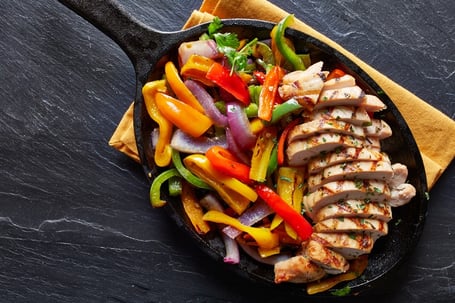 A lot of Americans see Cinco de Mayo as a reason to celebrate with all-you-can-eat chips and salsa, margaritas as big as your head, and lots of calorie-laden Mexican foods. Instead of the high calorie, high price route try these recipes and tortilla chip alternatives.
A lot of Americans see Cinco de Mayo as a reason to celebrate with all-you-can-eat chips and salsa, margaritas as big as your head, and lots of calorie-laden Mexican foods. Instead of the high calorie, high price route try these recipes and tortilla chip alternatives.
100-Calorie Super-Skinny Margarita
3 oz. Sparkling ICE Lemon Lime flavor (or any calorie-free sparkling lemon-lime water)
1½ oz. tequila
Juice from 1 orange
Juice from 1 lime
Shake all ingredients and pour over ice. Serve with a lime wedge.
Sheet Pan Chicken Fajitas
1 pound boneless, skinless chicken breasts
2 Tbsp olive oil
1 Tbsp chili powder
2 tsp ground cumin
1 tsp garlic powder
¾ tsp salt
1 large red bell pepper, sliced
1 large yellow bell pepper, sliced
2 cups sliced onion (about 1 large)
1 Tbsp lime juice
8 corn tortillas, warmed
Lime wedges, cilantro, sour cream, avocado and/or pico de gallo for serving
- Preheat oven to 400°F. Coat a large rimmed baking sheet with cooking spray.
- Cut chicken breasts in half horizontally, then slice crosswise into strips.
- Combine oil, chili powder, cumin, garlic powder, and salt in a large bowl. Add the chicken and stir to coat with the spice mixture. Add bell peppers and onion and stir to combine.
- Transfer the chicken and vegetables to the prepared baking sheet and spread in an even layer.
- Roast on the middle rack for 15 minutes. Leave the pan there and turn the broiler to high. Broil until the chicken is cooked through and the vegetables are browning in spots, about 5 minutes more.
- Remove from oven.
- Stir in lime juice.
- Serve the chicken and vegetables in warmed tortillas accompanied by lime wedges and topped with cilantro, sour cream, avocado, and/or pico de gallo, if desired. One serving equals two fajitas.
Tortilla chip alternatives for salsa and guacamole dipping:
- Cucumbers
- Cocktail shrimp
- Zucchini sticks
- Sliced bell peppers
- Carrot sticks
- Rice crackers
- Lentil chips
If you choose tortilla chips, stick to a serving, which is 12 chips!
If you want to celebrate the Mexican army’s victory over France at the Battle of Puebla on May 5 this year, throw together these improved-nutrition recipes with fewer calories, see these other tips for healthy eating at parties, and enjoy!
This blog was written by Angie Mitchell, RD, Wellness Coordinator. To find out more about the NIFS bloggers, click here.


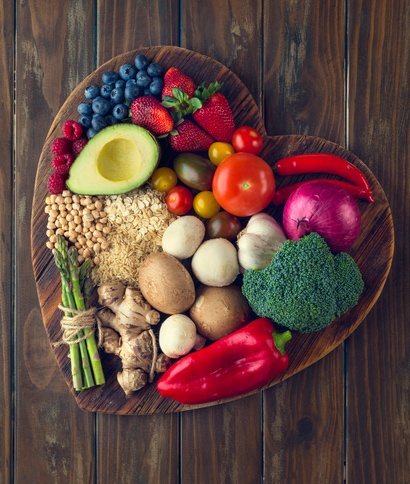 February is
February is  After the feasting season (Halloween to Christmas) comes the New Year, and for a lot of people this means a resolution. Most people make resolutions to start weight loss, work out more, eat better, and so on; but typically it is some sort of goal to start off the New Year on a healthier note. If you are hoping to have a healthier year, I have some suggestions that will help jump-start your January.
After the feasting season (Halloween to Christmas) comes the New Year, and for a lot of people this means a resolution. Most people make resolutions to start weight loss, work out more, eat better, and so on; but typically it is some sort of goal to start off the New Year on a healthier note. If you are hoping to have a healthier year, I have some suggestions that will help jump-start your January.
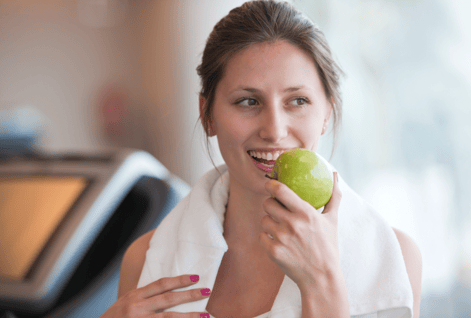 It’s coming…the holiday season! Many people tend to give up or have the “I’ll start fresh next year” mindset when it comes to exercise around the holidays. Don’t let that be you this year! Halloween is over and before we know it Thanksgiving and Christmas will be here. Parties will start, normal schedules will be crazy, and more food will be added to your life.
It’s coming…the holiday season! Many people tend to give up or have the “I’ll start fresh next year” mindset when it comes to exercise around the holidays. Don’t let that be you this year! Halloween is over and before we know it Thanksgiving and Christmas will be here. Parties will start, normal schedules will be crazy, and more food will be added to your life.
 One of my favorite things to do during summer in Indiana is to visit the various farmers’ markets around the Indianapolis area. As a dietitian I am a sucker for the fresh fruits and veggies, but I also love the homemade desserts, candles, pasta, kettle corn, fresh flowers, and other wonderful items you can find.
One of my favorite things to do during summer in Indiana is to visit the various farmers’ markets around the Indianapolis area. As a dietitian I am a sucker for the fresh fruits and veggies, but I also love the homemade desserts, candles, pasta, kettle corn, fresh flowers, and other wonderful items you can find. The weather is warming up, the flowers are coming out, and daylight is around much longer at night. All of these things mean one thing: time to start grilling again! Having a barbecue or cookout is a wonderful way to do a majority of your cooking because it is a healthy preparation method and leaves little to no cleanup in the kitchen!
The weather is warming up, the flowers are coming out, and daylight is around much longer at night. All of these things mean one thing: time to start grilling again! Having a barbecue or cookout is a wonderful way to do a majority of your cooking because it is a healthy preparation method and leaves little to no cleanup in the kitchen!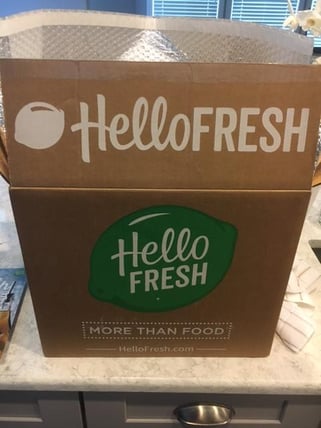 When I ask people why they don’t cook more, I get a lot of answers. Typically it’s along the lines of “I don’t have time,” “I haven’t been to the
When I ask people why they don’t cook more, I get a lot of answers. Typically it’s along the lines of “I don’t have time,” “I haven’t been to the 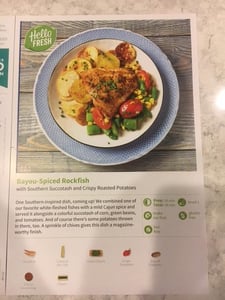
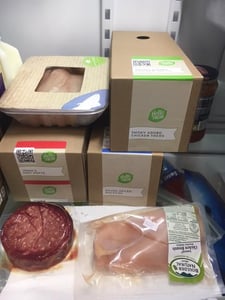 Making the Meals
Making the Meals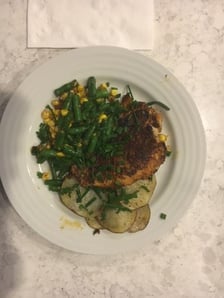
 The final thing to do was to put it all on the plate and taste it. I thought it was delicious! The portion size was ideal, the flavor was great, and the prep and cleanup were easy! From start to finish the time was around 30 minutes before eating.
The final thing to do was to put it all on the plate and taste it. I thought it was delicious! The portion size was ideal, the flavor was great, and the prep and cleanup were easy! From start to finish the time was around 30 minutes before eating.  The food truck phenomenon started in 2008 in California with a truck called
The food truck phenomenon started in 2008 in California with a truck called  Has dinnertime become the dreaded time lately? Getting picky children to eat can be very frustrating. Children of different ages may respond differently to various tactics. Here are a few ideas for how you can get your child to try (and hopefully like) new foods, and get better nutrition.
Has dinnertime become the dreaded time lately? Getting picky children to eat can be very frustrating. Children of different ages may respond differently to various tactics. Here are a few ideas for how you can get your child to try (and hopefully like) new foods, and get better nutrition.